Next story: Enter Here for Fresh Beer
Gritty is Pretty
by Jeff Czum
Take a trip through Eddy Dobosiewicz's Forgotten Buffalo
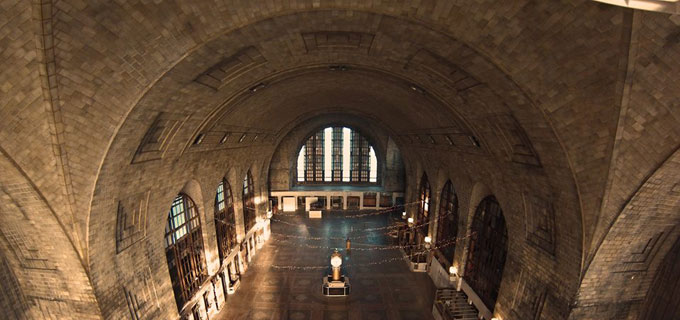
Eddy Dobosiewicz says that in spite of Buffalo’s well-known icons like the beautiful Albright Knox Art Gallery, Delaware Park, and the vibrant Shea’s Theatre, none of that is nearly as important as the stories told from the gritty atmosphere of some of the Buffalo’s elusive neighborhood taverns.
“Buffalo has a real industrial, gritty, American story to tell. Buffalo’s story is America’s story.” Dobosiewicz says. “Immigrants coming here from far away looking for the golden ticket, trying to find the land of ‘milk and honey.’ That’s exactly what we have. We can share that story in a unique way. We just don’t tell you. We show you. You can touch it and you can taste it. It’s all around you. You just have to look.”
After WWII, Buffalo’s population was a booming 580,132, unemployment was low and it was one of America’s leading manufacturing centers. The American Car and Foundry Company had reopened their Buffalo plant in 1940 to manufacture munitions during the war years. Bethlehem Steel, which acquired Lackawanna Steel CO. employed over 20,000 people, and was the world’s largest steel factory and Buffalo was still the terminus for the passage of goods and passengers on the Erie Canal.
“We became a huge transportation hub due to our location and that’s really what propelled us. We were the silicon valley of our day,” said Dobosiewicz.
That changed abruptly in the late 1950s.

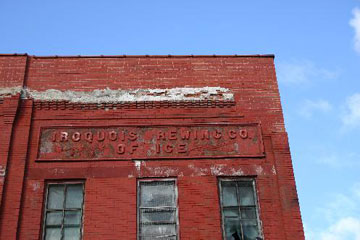
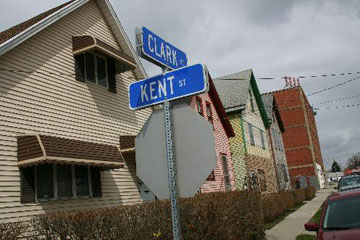
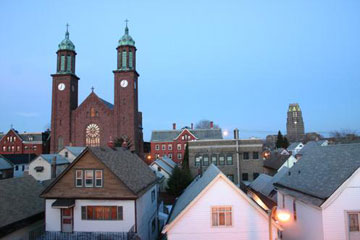
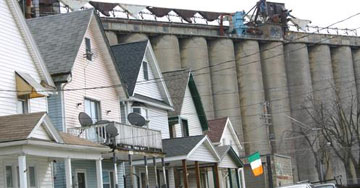

“The opening of the St. Lawrence Seaway [1957] really affected our city,” said Dobosiewicz. During the 60’s and 70’s, things started to deteriorate and big industries began leaving Buffalo. This city became a victim. The people of Western New York became their own worst enemies.
“As these neighborhoods struggled, I found a lot of the taverns were closing. I started documenting all the places that had closed and began to make a list of places that still remained open. I discovered that Buffalo still has a concentration of these neighborhood taverns that you won’t find in other cities.
“I don’t want people to look back and say ‘if only Buffalo was that way again.’ I don’t want people to lament the past.” According to Dobosiewicz that past is still here if we know where to look.
Forgotten Buffalo originally started to come together when Dobosiewicz was working at his chain of comedy clubs called The Comedy Trap, located in Buffalo, Niagara Falls, and Rochester.
“I got into the comedy business when I was living in Los Angeles during the early 80s, and when I moved back to Buffalo, I began organizing comedy shows at various clubs and restaurants and eventually opened The Comedy Trap. As a promoter, I was bringing in comedians from other cities to perform at my club.
“As a performer myself, I know what it’s like to be on the road and be in a different city with nothing to do. I felt obligated to take these performers out and about and give them something to do on their days off.”
Dobosiewicz had a chance to share his love for local history with other people who were interested in his hometown.
“I would do the obligatory things, like show them Niagara Falls and the Albright Knox, but then we would veer off. We would go exploring and I started to notice that every single one of these people was fascinated by the history of Buffalo and the oldness and grittiness of our city. It was different from what everyone at the time was saying about Buffalo.
“Everyone knew Buffalo had world-class Architecture and a world-class art gallery. They knew we had a great theatre district, but every city has those things. Our ‘old man bars,’ abandoned factories, old decaying buildings and even the Central Terminal fascinated the people I took around. That really awakened me to start Forgotten Buffalo.”
Dobosiewicz knew that there was something worth sharing in the un-told stories of old taverns that once served as a place where entire neighborhoods would get together to socialize and network.
“I love to go to old Neighborhood taverns and talk with old people. You can’t get those stories anywhere else. To have a conversation and share a beer with someone who remembers prohibition, or someone who experienced WWII. It’s an entirely different perspective and it’s worth sharing.
“Those stories prompted The Queen City Chronicles which now air on Channel 7. I approached channel 7 when they went under new management. Now I create weekly stories that highlight Buffalo’s past—which could also be a roadmap to our future. It became a huge hit and now people are tuning in every week. We’re hoping it’s a trend that other cities can get behind.”
Classic corner taverns once served as a place for residents and workers to socialize with each other in their neighborhoods.
“This was before Facebook and social media, people really came to these old taverns to socialize and even ‘network’ sometimes. The Tavern owners knew who was hiring and would often help find people jobs in expanding neighborhoods,” said Dobosiewicz.
The official Forgotten Buffalo tours began after John Karastamatis, a reporter from the Toronto Star got in touch with Eddy’s fictional persona Maxwell Truth at Off-Beat Cinema, which is a televised two-hour movie show that aired late-night throughout the United States.

The Star requested a tour of “Off-beat Buffalo” for a feature story on The City of Good Neighbors in 2008.
“We ended up spending 10 or 12 hours together,” Dobosiewicz recalls. “He wasn’t interested in the touristy attractions, so we went to places like the Broadway Market, old steel plants, the grain elevators, and old bars. We went absolutely everywhere and spent the entire day exploring the city.
The Star feature generated so much interest and response that Dobosiewicz put Forgotten Buffalo into action with business partner, Marty Biniasz.
“All of a sudden I started to get requests from hundreds of people asking if I could give them tours like the one for Toronto Star, and a couple weeks later I rented a bus and took a bunch of friends and other people who wanted to join along. I thought it would be a cool way to show people a different side of the city, while also help these neighborhoods and taverns that were disappearing.”
A Forgotten Buffalo tour with Eddy Dobosiewicz is not like your typical informative experience.
“We eat, drink and laugh our way through Buffalo history,” Dobosiewicz says with pride. “It’s primarily a historical tour disguised as a party. Whether it’s an Irish or Polish themed tour, the story is told from the perspective of the old neighborhood taverns.
It stands out from your conventional tours that are just informative and flat. It’s different when you actually get to interact with the tour. You get to move and mingle with other people. I mean, I can tell someone that a tavern was built in the 1880’s and served as a place for socializing and networking, but to go in and actually have a beer while I’m telling you about the place and the surrounding neighborhood is a completely different experience.”
Whether Dobosiewicz takes you on an old classic tavern bar crawl or leads you through the historic Polonia neighborhoods of Buffalo’s East Side, Forgotten Buffalo offers people a chance to get in touch with their roots and feel proud about who they are and where they came from.
“No matter if it’s about your ethnic or civic heritage, be proud of who you are and where you came from. That pride gives you power. It creates strength and individuality, and an opportunity to affect the world in a positive way,” said Dobosiewicz.
“We’re a very cool medium sized city that has four seasons and a rich quality of life. We shouldn’t take that for granted.”
Forgotten Buffalo offers an experience like no other. It gives people a chance to learn about their history and value. Tours are $50-$55 per person and run about five hours. You’ll laugh, eat, and drink your way through Buffalo’s golden past while looking ahead at our flourishing future—and maybe understand why Buffalo is labeled an All America City.
blog comments powered by Disqus|
Issue Navigation> Issue Index > v14n2 (Week of Thursday, January 15) > Gritty is Pretty This Week's Issue • Artvoice Daily • Artvoice TV • Events Calendar • Classifieds |









 Current Issue
Current Issue